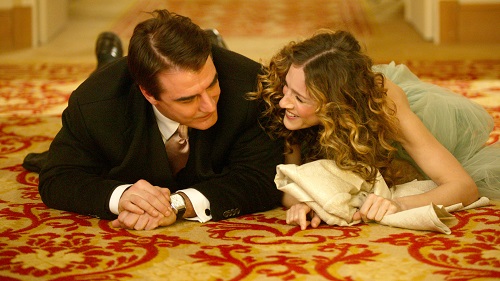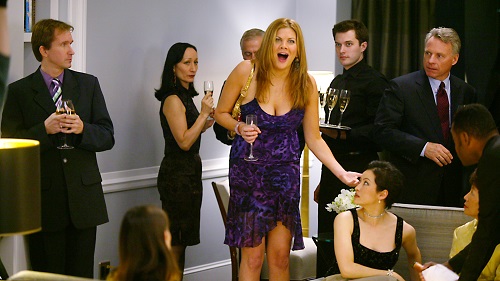Cynthia Nixon recently admitted to the New York Times that while she’s proud of what Sex and the City did for women, she didn’t like how the first movie linked love and money when Big bought Carrie a penthouse apartment with a customised walk-in closet and, worse, when the audience cheered.
“I remember when we screened the first movie in London, when Mr. Big shows Carrie the closet he’s built for her and the entire audience clapped”, she told the Times. “I found that devastating. Maybe that’s a strong word, but I was disheartened. Because I thought, ‘Is this what women in the audience think true love is? A man who has enough money to buy you a walk-in closet?’”

hbo.com
Now that Cynthia’s opened the floor to criticism of Sex and the City, I’d like to take the opportunity to talk about how I felt the last few episodes of the series did a massive disservice to all the work the previous seasons did to champion single women and how I, as one of those single women in her late teens/early 20s at the time the show aired, felt betrayed by how the series ended. It is a view I rarely share with others due to the fact that the series finale regularly tops ‘best of’ SATC countdowns and because of a conversation I had with someone years ago who asked me, ‘What? Don’t you like happy endings?’ Yes, of course I like happy endings in general, but why does a happy ending have to be synonymous with a conventional happily-ever-after?
I thought that Sex and the City’s version of a ‘happy ending’ was forced and bowed to convention, something that the series defied in previous seasons. If anything, the series finale didn’t present a happy message, but a terrible one – that, if you stick with it, the man who has treated you badly for years will one day turn around and declare his love for you. The effect was to undo years of Carrie’s hard work to get over a man who was bad for her, an effect that I felt was more significant than the warm and fuzzy feel-good one of the fairytale girl-gets-guy ending.

hbo.com
What’s more, I felt betrayed by how Sex and the City presented being a single woman as something from which you ultimately needed to escape. I get that, in the third last episode of the series called ‘Splat’, Kristen Johnston’s fall out of a Manhattan apartment window to her death was meant to symbolise the death of Carrie’s single self and, by extension, those of Charlotte, Miranda and Samantha, but did they have to make the poor woman such a tragic figure? Too loud, too drunk, slightly manic and snorting coke in the bathroom, this single woman was not exactly the type of person you would aspire to be. Candice Bergen’s Vogue editor character Enid, who represents single women a generation ahead of Carrie, doesn’t come off much better. Sex and the City uses Enid to show how a woman only becomes more desperate and hopeless as they get older; that no matter how successful they may be at their careers, these women will never truly be happy until they find a man.
I realise people’s response to my rant may be to tell me to lighten up and that it’s just a TV show, but back then, it wasn’t just a TV show to me. Seasons 1-5 of Sex and the City played a part in influencing and shaping how I saw myself when I was in my late teens/early 20s, and showed me that being single was a valid way to live my life. I still wholeheartedly believe this. It’s just a shame that SATC itself lost faith in it.
Want more? Check out what I had to say about Sex and the City 2 for GaydarNation.com when it was released in cinemas.